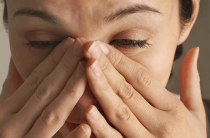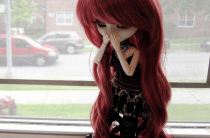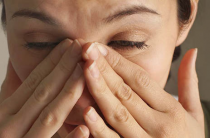Today we are witnessing the rapid development of various technologies and industries. Because of this, our immunity suffers. It is becoming more and more difficult for the body to resist external and internal stimuli. First of all, the liver suffers, which subsequently is not able to rid us of toxic substances. And increasingly, the population of large cities began to suffer from diseases such as allergies. The first signs of an allergy are quite diverse, depending on the type of allergen.
Signs of pollen allergy
Pollinosis is considered the most common type of allergy among the urban population. After numerous studies, it has been proven that residents of megacities suffer 6 times more often from this disease than people living in rural areas. Its first signs are observed from the respiratory system. Namely:
- Inflammation of the mucous membrane of the eyes;
- lacrimation;
- allergic rhinitis;
- Attacks of coughing and shortness of breath.
This symptomatology begins to manifest itself from the first minutes after being on the street. The flowering of plants begins from the end of March and lasts right up to September. Therefore, it is very important to know the flowering periods in order to protect yourself:
| End of March-May | Birch, poplar, willow, alder, apple, poplar, hazel. |
| June July | Oats, wheatgrass, wheat, barley, rye, timothy. |
| July-September | Ambrosia, plantain, quinoa, sorrel, wormwood, nettle. |
If you do not attach importance to the first signs of allergies, then the following, more serious ones will follow, such as:
- Hives;
- Itching and burning of the skin;
- Suffocation;
- Bronchial asthma;
- Quincke's edema.
Initially, urticaria on the body manifests itself in the form of small pimples. They are red or pink in color. With a more serious course of the disease, these spots increase in size (up to 12-15 cm) and merge together. Fluid-filled blisters may appear. At the initial stage, the patient does not experience much discomfort from this. But over time, the skin begins to itch, there is a burning sensation of wounds and their scarring.
Quincke's edema is considered a dangerous manifestation of allergy. It appears suddenly and develops very rapidly. Within a few minutes, some parts of the body, internal organs swell. Avoid swelling of the larynx, throat, tongue, or palate. Such edema prevents the flow of oxygen to the lungs, and suffocation occurs, as a result of which a person can die from asphyxiation.
How food allergies manifest
The first signs of an allergy to certain foods are quite peculiar. They are very similar to the symptoms of poisoning, so few people attach importance to this, and they start treatment initially incorrectly. Due to the condition of the patient is aggravated and delayed for a long time. Initial symptoms include:
|
|
|
With an erroneous self-diagnosis, complications will necessarily occur in the form of urticaria and other rashes throughout the body, conjunctivitis, rhinitis, and increased sweating. It is not excluded the formation of eczema and ulcers on the body. In rare cases, patients complain of a decrease in pressure, loss of consciousness, headache. Severe complications include anaphylactic shock and Quincke's edema. To avoid all this, you need to exclude from your diet such foods as smoked meats, sausages, pasta, fresh white bread, chocolate, preservatives, seafood, honey, coffee and alcohol. Don't put off going to the doctor either.
Symptoms of Allergy to Cats and House Dust
The first signs of an allergy to cats and dust are quite similar. In these cases, it is the dust that accumulates on the fur of a pet and on interior items that can act as an allergen. Dust is nothing more than a collection of dead parts of the skin, hair, fungi, microscopic mites. If an allergy occurs after contact with an animal, then the source of the problem is the protein produced by its body, which is excreted with the saliva and urine of the pet, and spreads throughout the apartment.
 Symptoms of these diseases are as follows: shortness of breath, frequent bouts of coughing and sneezing, nasal congestion, redness of the eyes and watery eyes. Victims often complain of severe itching. Because of this, sleep is disturbed, and the work of the nervous system as a whole. In advanced cases, agnoedema appears, mainly on the face. If you ignore the signs and do not follow preventive measures, the patient runs the risk of getting such a chronic disease as bronchial asthma.
Symptoms of these diseases are as follows: shortness of breath, frequent bouts of coughing and sneezing, nasal congestion, redness of the eyes and watery eyes. Victims often complain of severe itching. Because of this, sleep is disturbed, and the work of the nervous system as a whole. In advanced cases, agnoedema appears, mainly on the face. If you ignore the signs and do not follow preventive measures, the patient runs the risk of getting such a chronic disease as bronchial asthma.
To prevent all this from happening, keep the house clean. Bathe your cat regularly and do a wet cleaning. It is advisable to get rid of all kinds of dust collectors such as carpets, bedspreads, thick curtains, souvenirs, soft toys. Keep your pet out of your bedroom and on your bed. And keep cat dishes and a toilet in a place where you are least likely to be.
Signs of a sun allergy
This disease is considered the most intractable, since it is almost impossible to hide from the sun's rays. Symptoms can appear both from the first minutes of being on the street, and after enduring some incubation period of several days. The first signs of an allergy look like this:
|
|
|
In a healthy person, such symptoms arise from prolonged exposure to the open sun. Therefore, when the source of the allergen is eliminated, they disappear after a couple of hours. If the situation does not improve, this may be the first bell. Often, solar allergy manifests itself due to the use of certain medications (antibiotics, hormonal drugs, drugs for the cardiovascular system), food (citrus fruits, herbs, alcohol, carrots, figs, nuts, chocolate), herbs (nettle, chamomile, hawthorn , angelica), the use of decorative cosmetics, creams, sunscreens.

The best prevention is to tan in the shade. Avoid exposing your skin to direct UV light. When going out, wear clothing that covers the body as much as possible, preferably in light colors. A prerequisite is a hypoallergenic diet. Be careful, because an allergy to the sun can cause papillomas, which are considered provocateurs for the appearance of malignant tumors.
Characteristic features of allergy to insect stings
This type is difficult to recognize, since the symptoms can act as the usual normal reaction of the body to external stimuli. Normal is the reaction that occurs immediately after an insect bite in the form of swelling in the area, redness and a slight burning sensation. Sometimes the area of swelling may increase. For example, the bite fell on the palm, and the swelling went to the whole arm. This symptomatology is not dangerous if complications from the respiratory and respiratory system are not observed.
But the following manifestations testify to allergies:
|
|
|
In such cases, do not engage in amateur activities, but immediately call an ambulance. With this type of allergy, the risk of Quincke's edema is very high, which often leads to death. The most common causes of allergies are the stings of bees, wasps and mosquitoes. You should be careful with children. The immunity of the child is quite weak and fragile, so they are most susceptible to all sorts of diseases.










